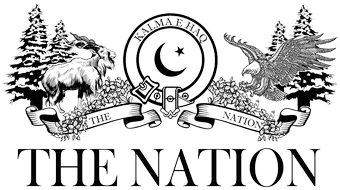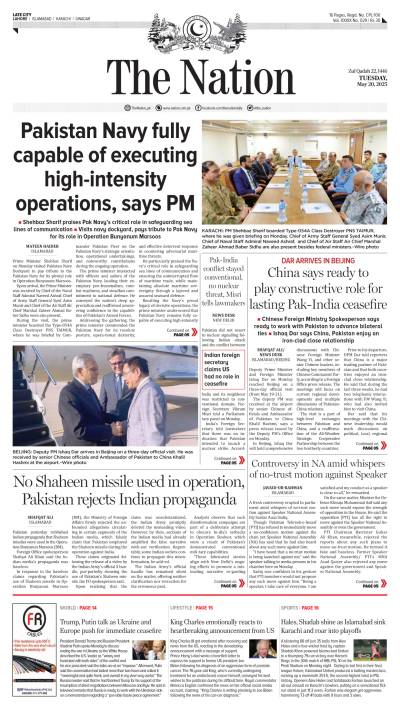Surveys facilitate research. In marketing, they have a direct impact on sales. However, in social sciences, these samples and simulations are inputs to facilitate modelling and conclusions to formulate viable policy options. Hence corporatists and social scientists will disagree and view surveys differently.
The recent International Republican Institute (IRI) survey with political connotations was conducted by Institute for Public Opinion Research (IPOR) from 1st to 26 August. The timings coincided with a new political dispensation in its first 100 days. From another perspective, the survey is the first post-election feedback that can be used for research into critical national issues. The feedback would only be productive if it is directed objectively into research and policy options.
The sampling and survey methodology meet international standards. Chitral and FATA were once again ignored due to lack of ingress. Considering that terrorism and its related issues impact adversely on Pakistan’s internal and external policy, the ensuing survey relegates some conclusions to insignificance. Due to this structural defect, law and order, terrorism and drones remain a distant low.
Within 5,000 respondents, only 69% (3250) responded. This means that 31% amounting to 1,750 individuals did not value their opinion. Based on the perception that either the entire exercise is futile or reflects a ‘could not care less’ attitude, this is a rather high rate of dismissal. This trend is reflected throughout the survey amongst the remaining 3,250. Consequently, though the representative nature could be challenged, inferences from some glaring aspects cannot be ignored. This makes the IRI survey valuable.
Unlike the past, where people showed political maturity and association with a larger notion of national well-being, this survey is distinct in disassociation from national issues. The vigorous response of 75-78% of votes as a change in the past has gradually tapered to below 70%. The pattern reflects indirectly on the fairness in the elections and political parties. The survey chose not to pursue opinions of 40% who either questioned fairness or were non-committal. Lesson learnt is that a survey becomes as much objective as one attempts making it.
The question of whether Pakistan is on the right or wrong path and repeated differently remains inversely proportional. Though there is a 10% decline from July 2012 to 81% in positive approvals, the sceptics have risen from 8% to 17%. Seen on a continuum since 2006, it registers a sway between hope and disillusionment. It also reflects a happiness and positivity factor in the people of Pakistan ranked 16th in 2012 and 81st in 2013 by international surveys. When contrasted with other indicators on Pakistan’s most pressing issues, the people are unanimous in considering economic factors as the most pressing issues. Somehow pressing questions on the relationship of internal stability to economic progress are missing. Asked the same in a personal manner, 49% maintain that economic prospects will improve while 44% opine that they will either get worse or remain bad. This reinforces the impression that the people of Pakistan embroiled in rigours of day to day existence have little time to think of the larger national picture. In another context, the approval ratings despite plummeting socio-economic conditions also give an impression of a national conscience at sleep. The character to relate self to a higher notion of nationhood is depleting. The lack of national consciousness is ascribable to the failure of the state to hold its national conscience together.
A general sense of national wellbeing leads to complementary alliances amongst diversity while contrary leads to unhealthy competition and fractures in a single identity. This single conclusion raises the significance and importance of the social theory that good socio-economic conditions impact directly on national integration and nationhood. Considering that opinion makers suggest that Pakistan’s identity is under threat, this conclusion from the IRI survey should ring alarm bells for the government and political parties of Pakistan.
Within the organisations, the army has approval ratings of 89%, something contrary to what the political elites and media may like the world to believe. 25% consider military to be the most credible in resolving the law and order issues of Karachi.
Media as a force multiplier is the 2nd best at 80%. Within the media groups, Geo and PTV appear to be most biased in favour of PML-N. Express with a small viewership is the most balanced. Opinion on preferential treatment of PML-N by Geo stands singled out and an aspersion on its neutrality.
A chilling conclusion is the response of 29% respondents about the indispensability of international aid to healthcare and education. This is not only an indictment of the healthcare and education system but also a tip of the iceberg reflecting fault lines. Within this 29%, 30% look forward to Saudi Arabia, 20% to China, 7% to USA and 5% to Iran. The consolation is that 59% believe that Pakistan can do it alone.
Generally, the survey gives a clean chit to PML-N with a reasonably good standing in Balochistan. PPPP seems to struggle at the federal level but maintains its reasonable standing in Sindh. These are the status quo parties and together continue to roll the roost in power and opposition.
The party that seems to suffer the most is PTI. Though it registers a marginal improvement in KP, its image as a party of change and reform that peaked at 31% in February 2012 has nosedived to 11%. In Punjab, its approvals have dropped from 33% to 9%, in Sindh from 15% to 5%, in KP from 49% to 31% and Balochistan from 35% to 2%. In public perception, this is an indictment of irregularities in intra party elections, the electable politics, internal dissentions, and inability of the party leadership to capitalise on the charisma and emotions generated by its chairman, Imran Khan. Perhaps the most telling effect is the politics of exclusion being followed by the elected representatives and members of the core committee distancing the grassroots’ activists and low level leadership. Despite such battering, 28% still consider it a party of change and 21% a party of youth. All summed up, its positive image stand at 77%. PTI carries charismatic appeal and can bounce back if it learns fast and makes amends?
IPOR seems fancied not only by the NGO sector but also political parties. PML-N and PML-Q are their clients. PTI that once rubbished surveys conducted by IPOR is now on the client list. This indemnifies the inferences from the survey that political elites and corporatocracy take the front seat in PTI politics. This must change or else, wither the politics of change.
The writer is a retired officer of Pakistan Army and a political economist.
Wednesday, May 21, 2025
IRI survey and change
5:43 PM | May 20, 2025
-
Lahore emerges among safest global cities in Numbeo 2025 index
-
Lahore emerges among safest global cities in Numbeo 2025 index
-
India’s suspension of Indus Water Treaty legally baseless
-
Seventh polio case reported in Pakistan amid nationwide vaccination drive
-
Pakistan reports sixth polio case of 2025
-
PTA begins issuing VPN licences to regulate usage
The Wider War
May 20, 2025
Margalla on Fire
May 20, 2025
Defeated and Depressed
May 20, 2025
Regional Reset
May 19, 2025
Peak Potential
May 19, 2025
Golf or Water
May 21, 2025
Performing CPR
May 21, 2025
Lack of Sign Language Teaching
May 21, 2025
State of War & Public Awareness
May 21, 2025
Indian Attack
May 21, 2025
ePaper - Nawaiwaqt
Nawaiwaqt Group | Copyright © 2025





